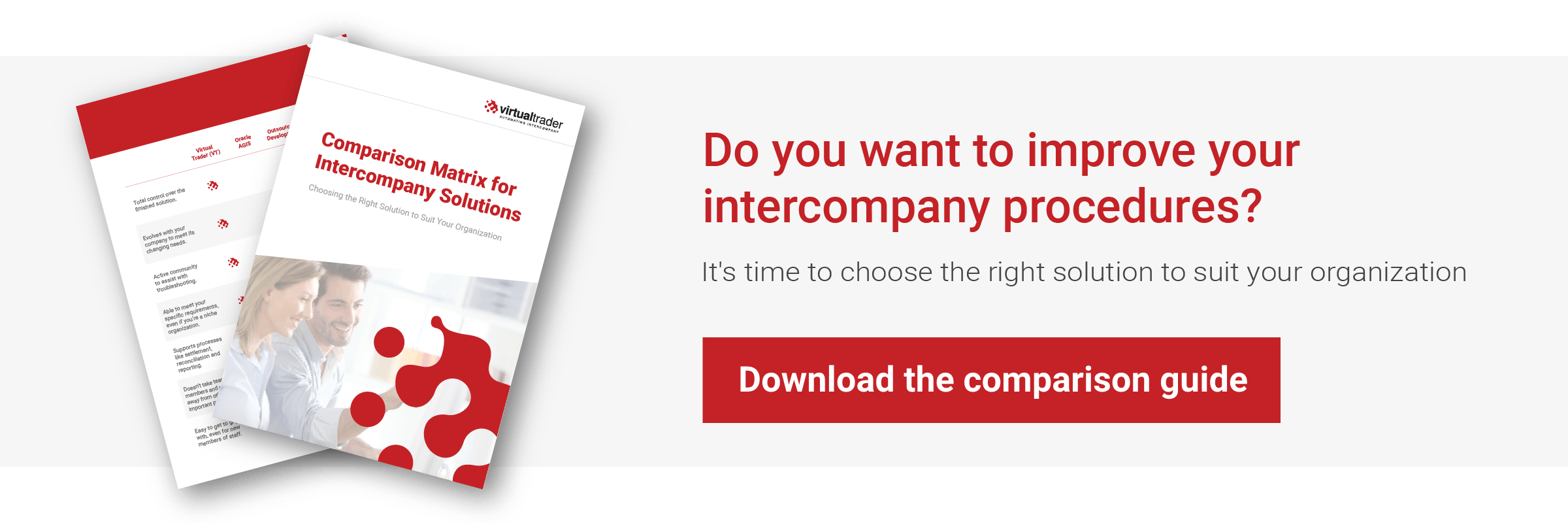Finding the right automated solution to manage intercompany transactions is a difficult process. The first step is to identify that your business actually needs a management system. Without one, the reconciliation process is unnecessarily time consuming and laborious.
Some organizations choose to task an external company with developing a bespoke solution. Before you decide to do the same, here are the pros and cons of an outsourced dev solution and other options that are available.
Outsourced Developed Solution: The Pros
When you’re tasking a specialist company to create a developed solution, you have total control. If there are specific, unique issues you have during intercompany transactions, you can create a solution that deals with them — something an off-the-shelf option might be unable to do.
If you choose to keep the development of the system in-house, it can take valuable resources and team members away from other important projects. By outsourcing, you leave the development in the capable hands of specialists who have prior experience.
For many businesses, a one-size-fits-all approach isn’t effective. Organizations that work in niche industries need a system that will meet their specific requirements. Total control of the development process allows you to ensure that everything you need is included. In-house teams can have limited time and capability.
Outsourced Developed Solution: The Cons
Deciding that you want a solution to be developed for intercompany transaction management is the first step on a lengthy road to implementation. It takes a long time from conception to completion and isn’t an immediate, short-term fix.
Even when the system is complete, it requires lengthy testing to highlight and iron out any problems. Depending on how the solution has been created, your team will also require additional training time while they adapt the ways they work.
Having a management system that’s completely bespoke can make it difficult when training new members of staff. There’s also no guarantee that the brand-new system created for you will work well with intercompany management solutions used by all your subsidiaries.
This means a company-wide switch to the new system, which can take substantial time and money.
Because you’re the creator of the development solution, there’s no community to turn to when you need to troubleshoot issues. If there’s a problem with a widely used system, users can turn to a large bank of online content, community forums, or even customer service for support.
Once the external company has finished implementing the solution, they might not be responsible for its maintenance or support. Unless you have a pre-agreed support contract, there will be no one to turn to if something goes wrong.
Other Options Available to You — Including In-House Development
Outsourcing the project isn’t the only option available to your business, so it’s worth weighing up your options before committing to a plan.
Rather than trusting an external provider to carry out the development of an intercompany transaction management system, why not simply do it yourself? Keeping the development as an internal project does have some benefits.
An external source doesn’t understand your business like you do. When it comes to intercompany transactions, you know the day-to-day challenges that your business faces and how best to overcome them.
Working in-house allows you to create something that perfectly suits your needs. It will, however, have similar drawbacks to outsourcing, including the lack of a support system when something goes wrong.
Also, it’s unlikely that your organization has any experience in developing a solution of this kind. That means you’ll either have to dedicate significant time and money into learning how to do it, or you’ll need to hire the very best developers to complete the project, which can be costly.
In addition, hiring new staff can be a problem in the long run because there's often nothing for them to do after the system is finished.
For some businesses, Oracle AGIS offers enough functionality, and there’s no need to develop a solution. The AGIS module helps to reduce problems at period close due to flexible workflows and improved clarity — thanks to the shared journal-entry screen used by both the sender and receiver.
While it is true that Oracle AGIS creates intercompany journals, if your business needs a solution that maintains intercompany balances, you might need to look elsewhere.
Virtual Trader
Virtual Trader works as part of Oracle eBusiness Suite, designed specifically for automating intercompany transactions. Journals are created and settled automatically alongside aging analysis, which eliminates human error and makes period close far less stressful than it used to be.
Publishing period-end reports late can lead to serious legal and financial implications, but Virtual Trader ensures the reconciliation process is streamlined, efficient, and effective. Since Virtual Trader is hosted by Oracle, your staff will already feel familiar with the interface, dashboards, and processes.
To find out more about Virtual Trader and how it can help your business, download our free eBook to see how Virtual Trader compares to other solutions available to you.




 US
+1 800 961 9640
US
+1 800 961 9640

